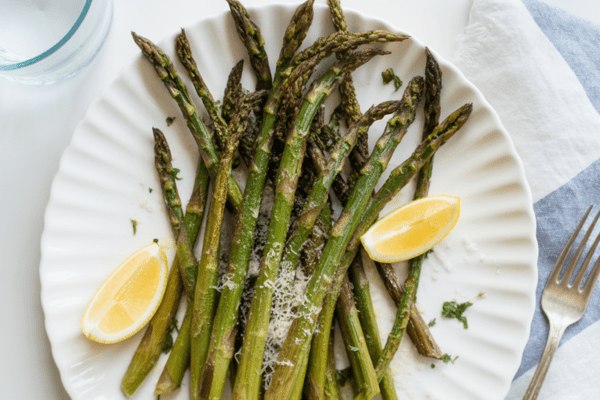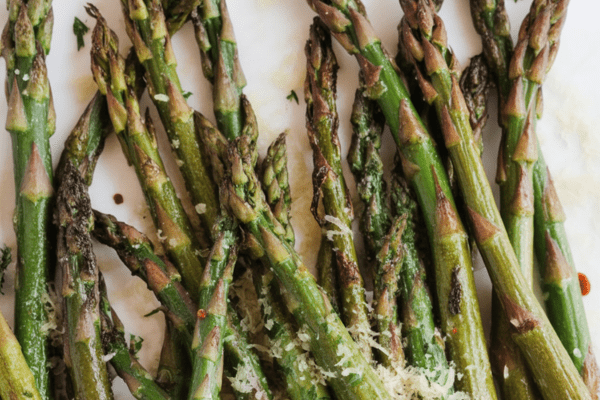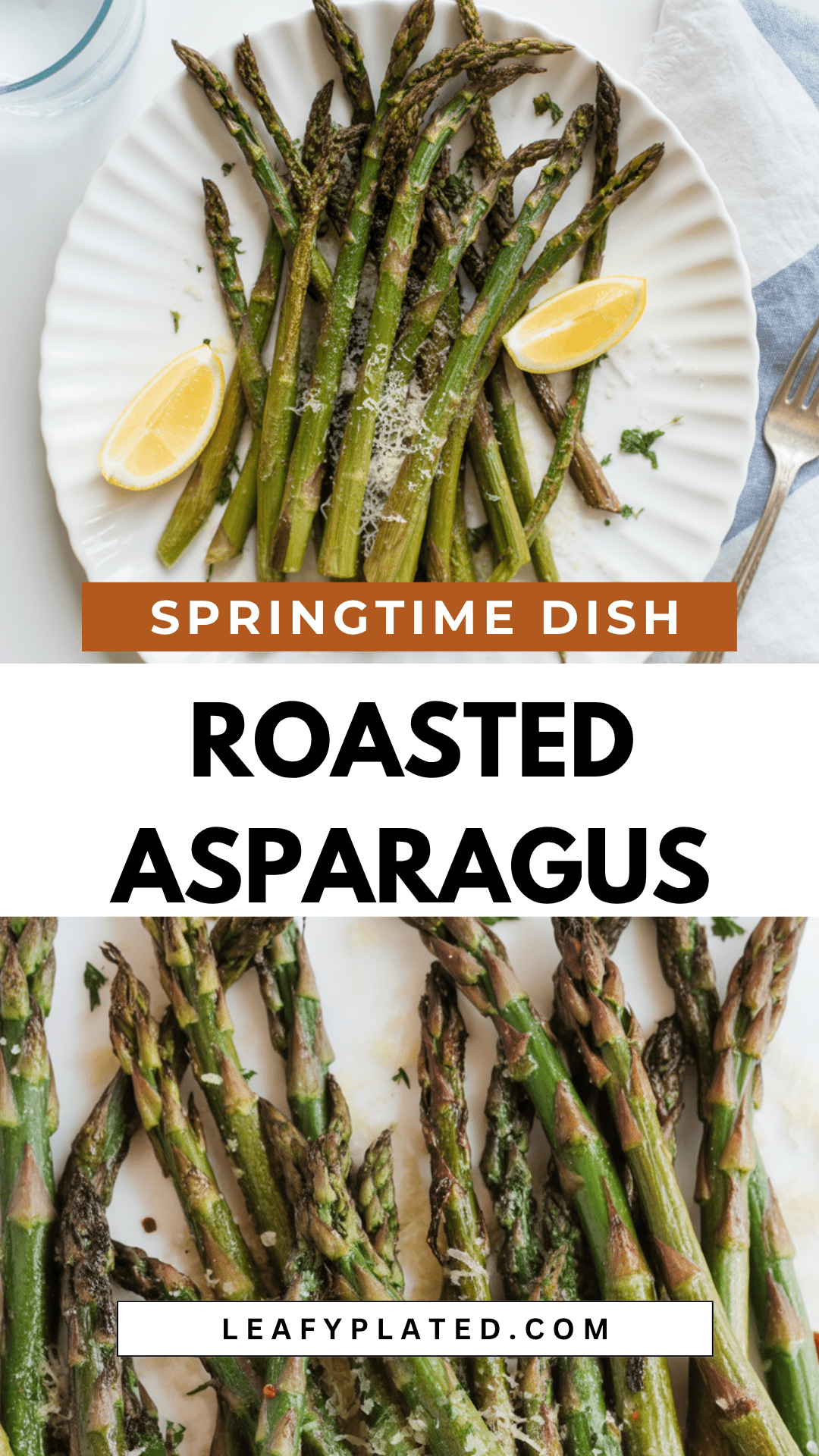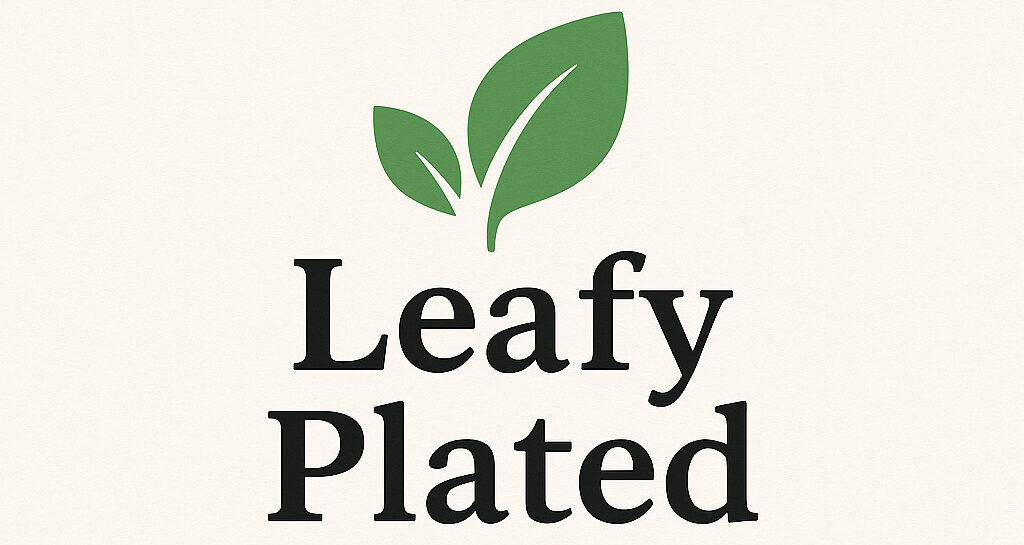Every spring, when those fresh bundles of asparagus show up at the market, I can’t resist grabbing a few. It’s such a reliable, quick side dish that somehow feels special.

One of my favorite ways to cook asparagus is to roast it in the oven. The heat brings out a deeper, slightly sweet flavor, and the tips get crisp and toasty—my personal favorite part. I love serving this with anything from a roast chicken to a simple omelette for brunch.
Why I Always Roast My Asparagus
Over the years, I’ve tried asparagus just about every way—steamed, boiled, sautéed—but roasting is hands-down the winner for me. The dry heat intensifies the flavor without making it soggy, and there’s this lovely browning on the edges that gives it a bit of texture.
When I have guests over, this is one of my go-to side dishes. It’s easy to prep in advance, slides into the oven while I work on other things, and comes out looking restaurant-worthy with hardly any fuss.
And while I love it plain with just oil, salt, and pepper, it’s also a perfect blank canvas for adding whatever flavors you’re craving.
My Best Tip for Keeping Asparagus Fresh
Here’s something I learned the hard way after wasting too many limp bunches. When you get home from the store, treat your asparagus like flowers.
I trim the bottoms just a bit and stand them in a jar with a couple inches of water. If I have room, I’ll put a loose plastic bag over the top. This keeps them fresh for days longer in the fridge.
If you cook with asparagus often in the spring, it’s a great habit to pick up—you’ll save money and always have a crisp, green bunch ready to roast.
Getting Asparagus Ready for the Oven
The only thing that can ruin roasted asparagus is leaving on those woody ends. Nobody wants to chew through that.
I snap them off by hand. Just bend near the base until it breaks naturally—that’s the plant’s way of telling you where the tender part starts. It’s oddly satisfying, and kids actually love helping with this step.
Once prepped, I give them a quick rinse and pat them dry before tossing with oil and seasoning.

Easy Roasting Method
Roasting asparagus doesn’t need to be complicated. I like to line a baking sheet with parchment to make cleanup easy.
I spread the asparagus in a single layer, drizzle with olive oil, and sprinkle with salt and freshly ground black pepper. Then I toss them gently right on the tray so they’re evenly coated.
Bake at 400 degrees Fahrenheit. For thin stalks, check at around 10 minutes—they should be bright green and tender but not mushy. Thicker spears can take closer to 15 or even 20 minutes.
I usually pierce one with a fork to test. I prefer them with just a bit of bite left, so they hold up nicely on the plate.
My Favorite Ways to Add Flavor
Plain roasted asparagus is great, but sometimes I want to dress it up. Here are some of the ways I make it more interesting:
- A squeeze of fresh lemon juice or some lemon zest for brightness.
- A sprinkle of finely grated Parmesan cheese as soon as it comes out of the oven so it melts just slightly.
- Chopped fresh herbs like mint or parsley for color and freshness.
- A pinch of red pepper flakes if I want a little heat.
- A small pat of butter for richness that melts over the hot asparagus.
- A drizzle of balsamic reduction for a sweet, tangy finish.
- A handful of toasted sliced almonds for crunch.
I don’t always use them all—usually I pick one or two depending on what else I’m serving.

Serving Suggestions from My Kitchen
This dish shows up on our table in so many ways. For brunch, I love it next to scrambled eggs or a vegetable frittata. At dinner, it’s perfect with baked salmon, roast chicken, or even a simple pasta.
When we have friends over for grilling, I’ll roast a big tray of asparagus alongside potatoes and serve everything family-style. It’s one of those sides that makes a meal feel complete without much effort.
And if there are leftovers? I chop them up and toss them into salads, grain bowls, or even omelettes the next day. Nothing goes to waste here.
I hope this inspires you to pick up some fresh asparagus and give roasting a try. It’s one of those little cooking tricks that can turn an ordinary meal into something worth slowing down for. Let me know how you like to season yours—I’m always looking for new ideas to try in my own kitchen.
Roasted Asparagus

If you’re looking for a simple and elegant spring side dish, roasted asparagus is always a hit. It’s quick, versatile, and comes out perfectly tender with just a bit of crispness around the edges.
Ingredients
- 1 large bunch (about 1 pound) fresh asparagus
- 1 to 2 teaspoons olive oil
- Salt, to taste
- Freshly ground black pepper, to taste
Optional Seasonings
- Zest and juice of ½ a lemon
- Lemon wedges (from the other half of the lemon)
- Grated Parmesan cheese
- Chopped fresh mint or parsley
- Red pepper flakes
Other Optional Toppings
- Small pat of butter
- Drizzle of balsamic reduction or thick balsamic vinegar
- Toasted sliced almonds
Instructions
- Preheat your oven to 425°F and line a rimmed baking sheet with parchment paper for easy cleanup.
- Trim the asparagus by snapping off the tough ends—just bend near the base and they’ll naturally break where needed. Discard the woody stems.
- Spread the asparagus spears out on the prepared baking sheet. Drizzle with olive oil and toss to coat evenly. Sprinkle with salt and black pepper, then arrange them in a single layer so they roast evenly.
- Roast in the oven until the spears are tender and easily pierced with a fork. Thin spears will roast in about 9–12 minutes, while thicker ones may take 15–20 minutes.
- Once roasted, transfer the asparagus to a serving dish and add your preferred toppings. A squeeze of lemon juice and a sprinkle of Parmesan is a classic combo, or try butter, balsamic drizzle, fresh herbs, or almonds for extra flair.
- This dish is best served warm from the oven, but leftovers can be kept at room temperature for up to 1 hour or refrigerated for up to 4 days. Gently reheat before serving.
Nutrition Information
Yield
4Serving Size
1Amount Per Serving Calories 243Total Fat 17gSaturated Fat 3gTrans Fat 0gUnsaturated Fat 13gCholesterol 9mgSodium 232mgCarbohydrates 20gFiber 4gSugar 12gProtein 6g
Leafyplated.com, occasionally offers nutritional information for recipes contained on this site. This information is provided as a courtesy and is an estimate only. This information comes from online calculators. Although Leafyplated.com attempts to provide accurate nutritional information, these figures are only estimates.

